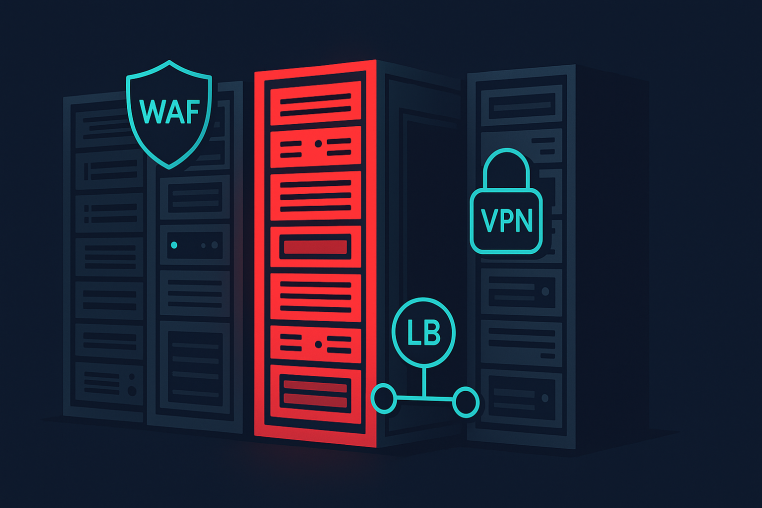“Imminent Risk” Alert: What SMBs Should Do About the F5 Vendor Breach Warning
When the alphabet soup of federal cyber agencies lights up your feed, it is easy to think, “That is a .gov problem.” Not this time. A warning tied to F5, whose tech powers a lot of load balancers, WAFs, and VPN gateways — matters to small and midsize businesses, even if you have never purchased an F5 appliance directly. #versee
Here is the plain-English version of what is going on, why it touches non-government networks, and exactly what to do today.
The 60-Second Brief
-
What happened: U.S. cyber authorities warned of an “imminent risk” tied to a potential breach at F5, a vendor behind critical network gear that often sits in front of your apps.
-
Why it matters to SMBs: Even if you do not own F5 equipment, your MSP, hosting provider, CDN, or security vendor might.
-
What to do now: Confirm exposure with vendors, patch anything F5 related, rotate credentials and API keys, lock down management access, and run a quick threat hunt for tampering.
Why This Is Not Only A Government Problem
F5 gear sits in the blast radius of a lot of modern infrastructure. It terminates TLS, enforces WAF rules, balances traffic, and sometimes brokers user authentication. If attackers gain inside knowledge of how these systems are built or configured, they can:
-
Find new bugs faster and exploit them more reliably
-
Abuse embedded credentials, API keys, or service accounts to move laterally
-
Hide in plain sight by tweaking rules or management settings
In other words, it is not just a “box problem.” It is a business continuity problem if that box is guarding your storefront, billing portal, or the app your team needs to serve customers.
A Quick Story
A 45 person logistics firm did not think they had any F5 exposure. They are on a managed cloud, use a popular CDN, and outsource security. After a short email to their providers: “Do you run F5 in our stack, and have you patched per the latest guidance?” They learned their CDN uses F5 at certain edges, and their MSP runs virtual F5 instances to front the firm’s SFTP and VPN. Patches were scheduled for that night. They also rotated a handful of API keys used for health checks. Small effort and big peace of mind.
Moral: You might not buy from F5, but your partners might on your behalf.
The SMB Playbook
1) Ask Your Providers Today
Send this to your MSP, hosting or cloud provider, CDN, or WAF vendor, and anyone who manages your edge or VPN:
Two questions:
Do you operate any F5 BIG IP, F5OS, or related components in services we consume
Have all instances been updated and hardened per the latest vendor and government guidance, and can you share evidence such as an asset list, versions, and change tickets
What “evidence” looks like: a short asset list with device names and versions, the change ticket or maintenance window reference, and a date and time. “We are monitoring” is not enough.
2) Inventory: What You Control
-
Check your CMDB, cloud accounts, and old IaC repos for BIG IP VE virtual editions
-
Search runbooks for “iRule,” “Virtual Server,” or “Traffic Management” that may signal F5
-
Review DNS and firewall rules for entries that suggest an F5 VIP in front of key apps
3) Patch or Upgrade With Urgency
-
Prioritize anything internet facing
-
If a device is end of support, plan an accelerated replacement. Isolation is a stopgap, not a strategy
-
After patching, confirm versions and re-enable enforcement only policies you may have relaxed
4) Rotate Secrets and API Keys
-
Replace service accounts, health check credentials, API tokens, and machine identities stored on or accessed by these devices
-
Scope replacements with least privilege
-
Update your secret vault and restart dependent services so they pick up the new keys
5) Threat Hunt For Tampering in 30 Minutes
Look for:
-
New or modified iRules you did not approve
-
Unfamiliar admin accounts or changes to identity providers
-
Config diffs that add data exfiltration, traffic mirroring, or logging to unknown destinations
-
Management access from unusual IPs or at unusual hours
If you have a SIEM or EDR, add a quick rule pack. Watch for unusual connections to F5 management, sudden spikes in 4xx or 5xx responses, and unexpected config changes.
6) Reduce Blast Radius
-
Put management interfaces behind VPN with MFA. Do not expose them to the public internet
-
Lock with ACLs so only a jump host can reach admin ports
-
Segment F5 management and data planes onto separate subnets with deny by default policies
-
Turn on security useful logging and forward to your SIEM
7) Vendor Risk and Insurance Notes
-
Add F5 to your third party risk register
-
Ask SaaS providers that handle PII or payments whether their edge or security stack includes F5, and whether they have completed remediation
-
Document actions and timestamps. Many cyber insurance policies requirethe timely patching of security appliances
Executive Talking Points
-
This is supply chain exposure. Our vendors may run F5 even if we do not
-
Timelines are tight. Government deadlines are measured in days, not months
-
Our actions are concrete. We are verifying vendor posture, patching, rotating credentials, and monitoring for tampering
-
Goal. Reduce the likelihood of downtime, data exposure, and regulatory knock-on effects
Helpful Scripts and Templates
Vendor Email Template
Subject: Urgent confirmation of F5 exposure and remediation
Hi <Provider>,
Given the recent federal warning regarding potential F5 risk, please confirm by end of day:
-
Whether any service you provide to <Company> uses F5, such as BIG IP, F5OS, rSeries or iSeries, or virtual editions
-
If yes, what remediation has been completed including versions, dates and times, and what remains
-
Evidence including an asset list and change ticket references or screenshots
Thanks,
<Your Name> | <Title>
Internal Ticket Checklist
-
Confirm if we own or operate any F5 components
-
If yes. Patch scheduled, version target, rollback plan
-
Rotate secrets and API keys
-
Lock down management access with VPN, MFA, and ACLs
-
Run config diff and SIEM hunt
-
Capture artifacts for insurance and compliance
Common Questions
Can we wait because everything still works?
You can, but you should not. Internet facing security appliances are prime targets in the first wave after an incident like this. Patch first, then schedule replacements if you are on unsupported versions.
Our provider says they are monitoring. Is that enough?
Monitoring is good. Proof of remediation is better. Ask for versions, change tickets, and times.
Do we need to assume credentials are compromised?
Assume any credentials stored on or used by these devices might be exposed. Rotate them and shrink privileges.
Should we reroute traffic away from F5?
Not unless you have planned for it. Sudden changes can cause outages. Patch, lock down, and monitor. If you can safely reroute during a maintenance window, treat it as a controlled change.
Bottom Line
This is not just a patch note. It is a business resilience moment. Whether F5 lives in your rack or inside a partner’s service, a few disciplined steps today can keep a scary headline from becoming a Monday outage.
#versee #CyberSecurity #SMB #CISA #F5 #PatchNow #ThirdPartyRisk #IncidentResponse

